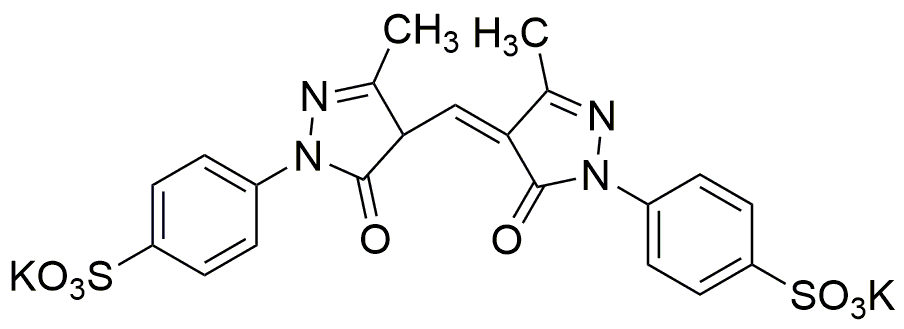Oxonol yellow K is widely utilized in research focused on:
- Biological Staining: This compound is frequently used as a dye in biological research to stain cells and tissues, allowing for better visualization under a microscope.
- pH Indicator: It serves as an effective pH indicator in various chemical analyses, helping researchers determine acidity or alkalinity levels in solutions.
- Environmental Monitoring: Oxonol yellow K is employed in environmental studies to track pollutants and assess the quality of water bodies, providing crucial data for ecological health.
- Food Industry Applications: In food science, it is used as a color additive, enhancing the visual appeal of products while adhering to safety regulations.
- Textile Dyeing: The compound is also applied in the textile industry for dyeing fabrics, offering vibrant colors that are resistant to fading.
General Information
Properties
Safety and Regulations
Applications
Oxonol yellow K is widely utilized in research focused on:
- Biological Staining: This compound is frequently used as a dye in biological research to stain cells and tissues, allowing for better visualization under a microscope.
- pH Indicator: It serves as an effective pH indicator in various chemical analyses, helping researchers determine acidity or alkalinity levels in solutions.
- Environmental Monitoring: Oxonol yellow K is employed in environmental studies to track pollutants and assess the quality of water bodies, providing crucial data for ecological health.
- Food Industry Applications: In food science, it is used as a color additive, enhancing the visual appeal of products while adhering to safety regulations.
- Textile Dyeing: The compound is also applied in the textile industry for dyeing fabrics, offering vibrant colors that are resistant to fading.
Documents
Safety Data Sheets (SDS)
The SDS provides comprehensive safety information on handling, storage, and disposal of the product.
Product Specification (PS)
The PS provides a comprehensive breakdown of the product’s properties, including chemical composition, physical state, purity, and storage requirements. It also details acceptable quality ranges and the product's intended applications.
Certificates of Analysis (COA)
Search for Certificates of Analysis (COA) by entering the products Lot Number. Lot and Batch Numbers can be found on a product’s label following the words ‘Lot’ or ‘Batch’.
*Catalog Number
*Lot Number
Certificates Of Origin (COO)
This COO confirms the country where the product was manufactured, and also details the materials and components used in it and whether it is derived from natural, synthetic, or other specific sources. This certificate may be required for customs, trade, and regulatory compliance.
*Catalog Number
*Lot Number
Safety Data Sheets (SDS)
The SDS provides comprehensive safety information on handling, storage, and disposal of the product.
DownloadProduct Specification (PS)
The PS provides a comprehensive breakdown of the product’s properties, including chemical composition, physical state, purity, and storage requirements. It also details acceptable quality ranges and the product's intended applications.
DownloadCertificates of Analysis (COA)
Search for Certificates of Analysis (COA) by entering the products Lot Number. Lot and Batch Numbers can be found on a product’s label following the words ‘Lot’ or ‘Batch’.
*Catalog Number
*Lot Number
Certificates Of Origin (COO)
This COO confirms the country where the product was manufactured, and also details the materials and components used in it and whether it is derived from natural, synthetic, or other specific sources. This certificate may be required for customs, trade, and regulatory compliance.

